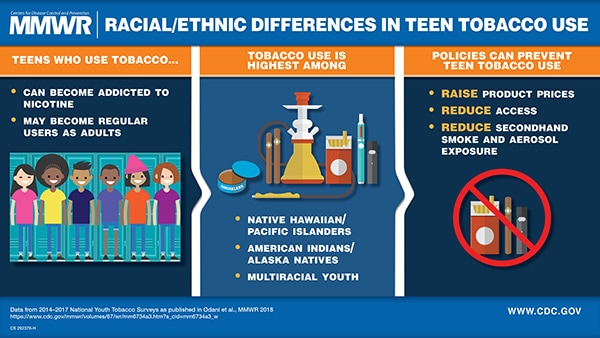
The Teenage Brain: A Work in Progress
The brains of teenagers are still maturing, which makes them more susceptible to external factors like nicotine. During this critical period of growth, the brain is highly plastic, meaning it is more susceptible to changes caused by substances like nicotine. As teens experiment with various behaviors and substances, the impact on their brains can be profound, affecting everything from decision-making to emotional regulation. The adolescent brain’s prefrontal cortex, responsible for impulse control and judgment, is still maturing, making it harder for teens to comprehend the consequences of their actions thoroughly.
The effects of smoking on the teenage brain are particularly concerning, as nicotine can interfere with the development of neural circuits that are essential for learning and memory. Long-term exposure can lead to decreased cognitive abilities, heightened impulsivity, and an increased risk of addiction. These lasting changes highlight the importance of educating teens about the dangers of nicotine use and encouraging healthier choices during this vital stage of brain development.
How Nicotine Affects Brain Development
Nicotine consumption during adolescence doesn’t just touch the surface; it penetrates deep into the neurological foundations, altering neurotransmitter systems still in their maturing stages. These neurotransmitters dictate mood, behavior, and cognition. Disruption on this level manifests as altered moods, heightened impulsivity, and even depression or anxiety. The teenage brain, driven by a relentless pursuit of new experiences, finds itself especially susceptible to the siren call of nicotine. Early exposure to nicotine rewires the brain’s synaptic pathways, leading to alterations in critical cognitive functions such as learning and memory. Such changes can impact academic performance and influence broader aspects of life, such as decision-making and risk assessment.
Addiction and Its Grip on Teens
The allure of nicotine is deeply embedded in its capacity to hijack the brain’s reward circuitry quickly. This manipulation ensures a sense of euphoria or relaxation, which adversely lures teenagers into a cycle of dependency. This cycle becomes an even more challenging foe for adolescents because their brains are still honing their decision-making and self-control faculties. Nicotine addiction doesn’t just foster physical reliance but also engenders deep psychological urges, trapping teens in a loop that’s hard to break. Exploring the biochemical mechanism of addiction provides a comprehensive picture of the profound impacts on young minds. Addressing these impacts through educational programs and community support is critical to breaking this cycle and aiding young individuals in reclaiming their mental autonomy.
The Social Elements of Nicotine Use
The landscapes of teenage life are dotted with pressures and influences, some of which covertly encourage nicotine use. Peer pressure ranks high on this list. As teens strive to fit in or emulate role models, they might find themselves edging towards nicotine use, often downplaying its risks in favor of perceived social acceptance. The depiction of smoking in films and advertisements makes its risks less clear by romanticizing its consumption. Understanding these social elements is paramount for developing effective prevention and intervention strategies. Diving deep into studies and informative articles unveils the motives behind youth tobacco use, equipping educators and policymakers with insights necessary to craft targeted and poignant messages counteracting such influences.
Health Implications Beyond the Brain
While the conversation often gravitates towards nicotine’s cognitive impact, its effects rove far beyond the brain. Chronic nicotine use during the teenage years can kickstart harmful health trajectories, compromising cardiovascular and respiratory systems. A teen with a history of nicotine use might show early signs of heart disease or respiratory difficulties, health concerns typically reserved for much later in life. The plethora of chemicals in tobacco products not only contribute to these risks but also intertwine to compound their potential harm. Recognizing these broader health implications provides a more comprehensive picture of nicotine’s risks, underscoring the urgency of proactive measures to curb its use among teenagers.
Prevention and Education: Key Solutions
Knowledge is one of the strongest deterrents against nicotine addiction. Education remains the cornerstone of prevention strategies, aiming to give teens the information necessary to make informed choices. Schools should integrate curricula that highlight the multifaceted risks of nicotine, supplemented by real-life stories that resonate on a personal level with students. Families can bolster these educational efforts by fostering open dialogues, encouraging questions, and discussing consequences. Community-based initiatives, pairing education with action, have the potential to create environments staunchly opposed to tobacco use. Drawing on evidence-based practices and frequent evaluations, these initiatives can evolve and adapt to meet the ever-changing landscapes teens navigate.
Supporting a Nicotine-Free Future for Youth
Promoting a nicotine-free trajectory for youth is a collaborative endeavor reliant on a nexus of support. Family, teachers, and healthcare providers each carry a torch in a united effort to light a path devoid of tobacco. Adults can significantly influence a teenager’s choices by creating an atmosphere that encourages healthy decisions and offers resources for quitting when needed. Developing engaging, evidence-based programs that appeal to both logical reasoning and emotional reflection can nurture the environment necessary for this support. These systems also ensure teens have a safety net ready to guide them toward healthier choices when they falter.
The Role of Technology in Curbing Nicotine Use
In today’s digital age, technology is a formidable ally in the crusade against nicotine use. Apps dedicated to smoking cessation, online communities offering support, and digital platforms presenting educational content are all at the forefront of this effort. These resources are not passive; they actively engage teens, offering interactive experiences that resonate with their unique challenges and aspirations. They allow for shared experiences, fostering a communal sense of commitment to quit or resist starting nicotine use. By harnessing these technological developments and integrating them into public health strategies, society can offer teenagers a wide array of tools to maintain their health and well-being, paving the way for a healthier future.

